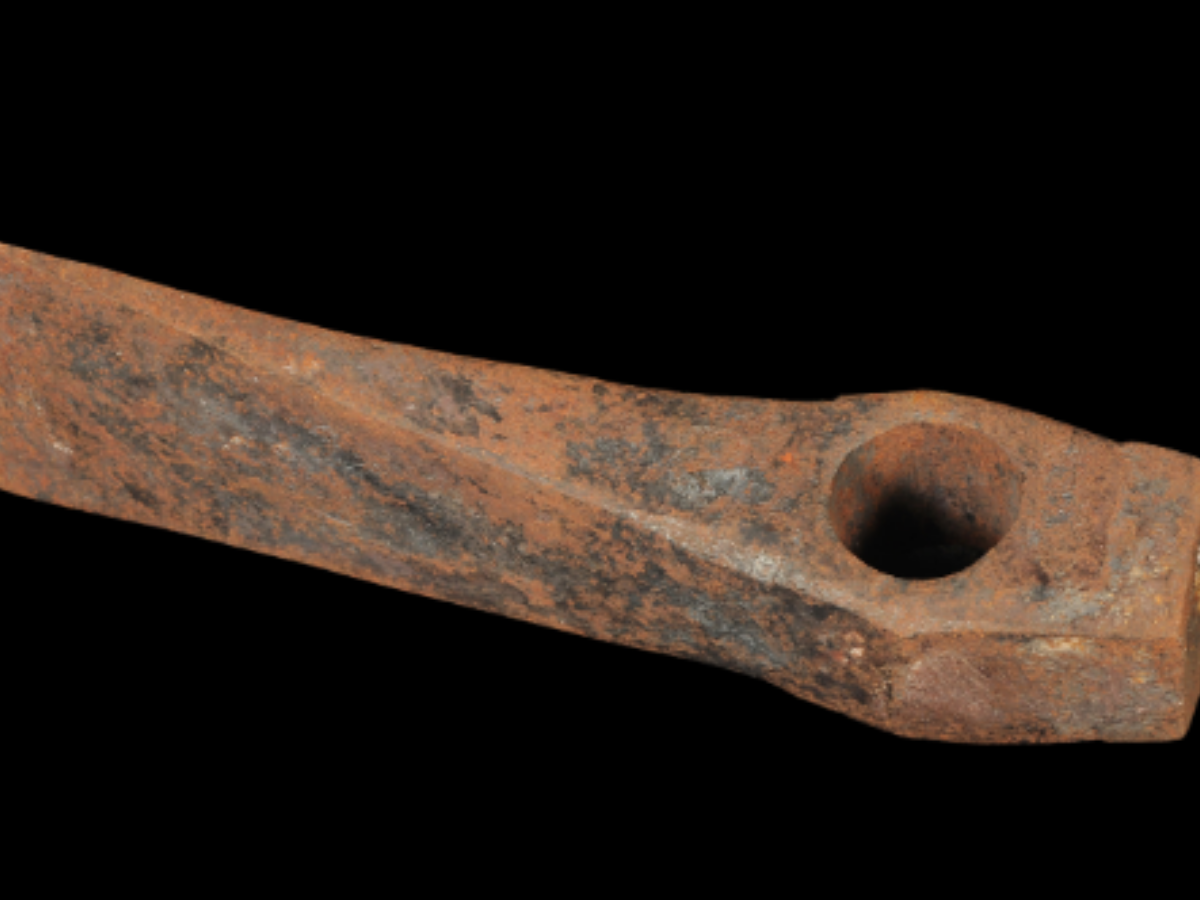State
Tribe Name
Art Type
short description
Agriculture along with forest-oriented livelihoods tie the Binjhal tribe of Odisha to a very rudimentary tool-the iron axe use of which forms an integral part in sustaining daily living. This axe is made from a single piece of iron thereby exhibiting traditional blacksmith expertise within the community. The front part of the axe head is broad making it a fine tool for chopping wood and cutting through tough materials, while the back portion gradually narrows into a ferrule-like shape allowing it to fit securely into a wooden handle. The rear end of the axe is squared-off giving stability and weight for better control.
Thumbnail

Filter Postion
Left
Filter Background
Off
Theme
Filter Header Image

content
Image

description
Agriculture along with forest-oriented livelihoods tie the Binjhal tribe of Odisha to a very rudimentary tool-the iron axe use of which forms an integral part in sustaining daily living. This axe is made from a single piece of iron thereby exhibiting traditional blacksmith expertise within the community. The front part of the axe head is broad making it a fine tool for chopping wood and cutting through tough materials, while the back portion gradually narrows into a ferrule-like shape allowing it to fit securely into a wooden handle. The rear end of the axe is squared-off giving stability and weight for better control.
For the Binjhal people, this axe is much more than a mere tool; it is an absolute necessity because they use it mainly for cutting trees, sawing lands for agrarian purposes, firewood collection, and very often for building purposes. Since the tribe is very much associated with the forest environments, these finely crafted axes form an essential part of their daily index of work. Knowledge of making and operating these axes has come down from generation to generation, thus keeping their traditions alive.
The iron axe of the Binjhal tribe hoards the legacy of their self-sufficiency and an intensive bond with nature. When we preserve such indigenous tools and skills, we not only protect their heritage but also honor their sustainable way of life .
For the Binjhal people, this axe is much more than a mere tool; it is an absolute necessity because they use it mainly for cutting trees, sawing lands for agrarian purposes, firewood collection, and very often for building purposes. Since the tribe is very much associated with the forest environments, these finely crafted axes form an essential part of their daily index of work. Knowledge of making and operating these axes has come down from generation to generation, thus keeping their traditions alive.
The iron axe of the Binjhal tribe hoards the legacy of their self-sufficiency and an intensive bond with nature. When we preserve such indigenous tools and skills, we not only protect their heritage but also honor their sustainable way of life .
Image Mode
landscape
promoted
On
Verified
Off
